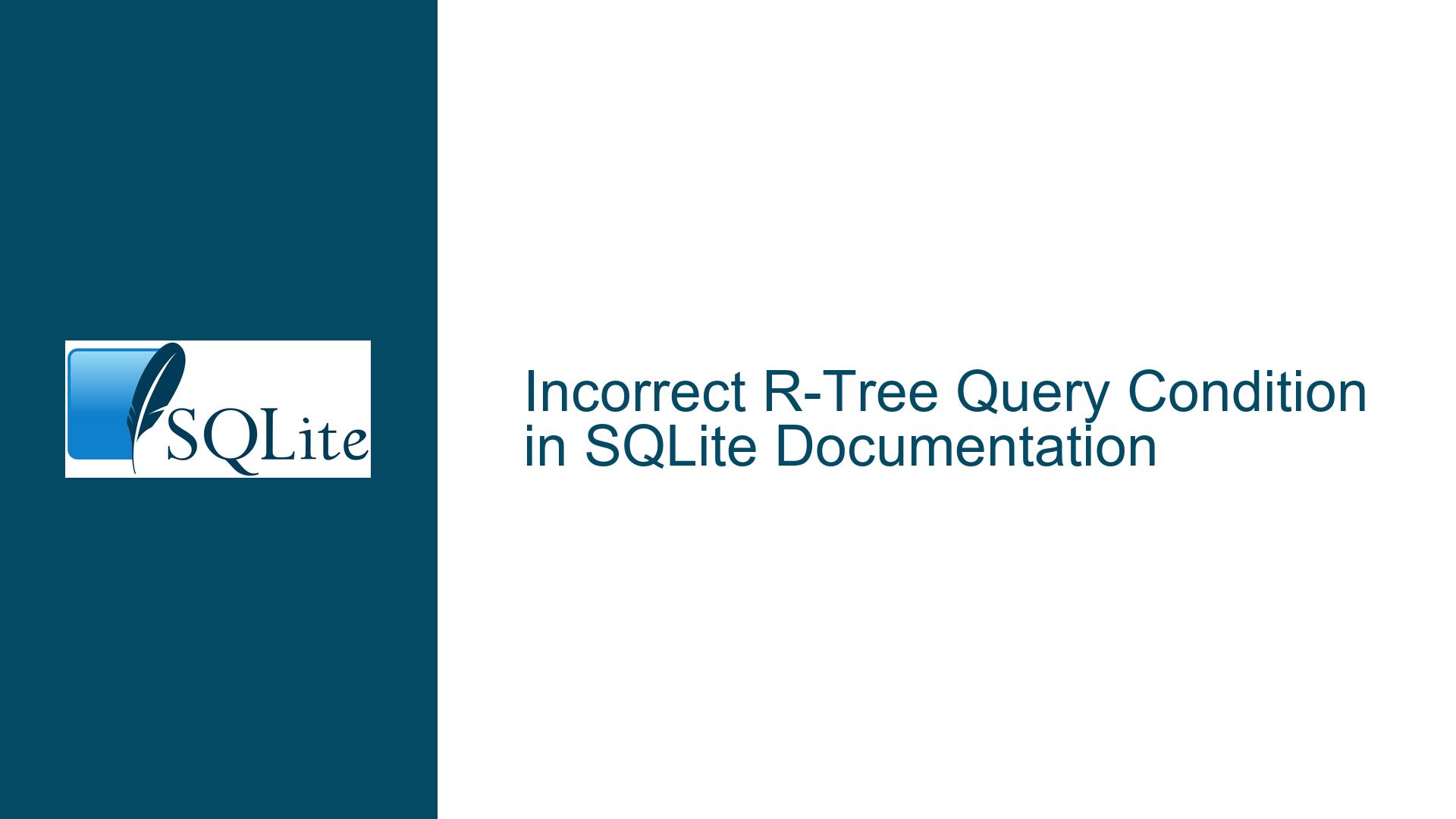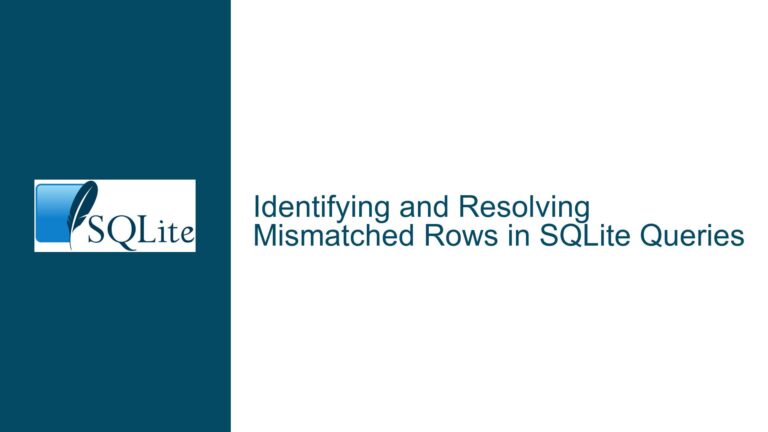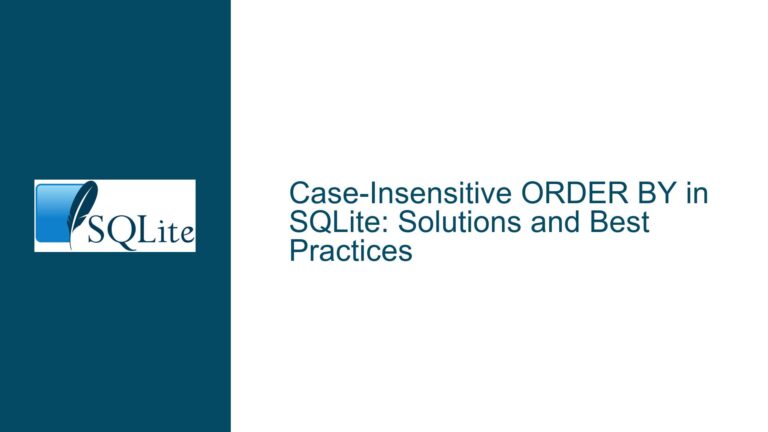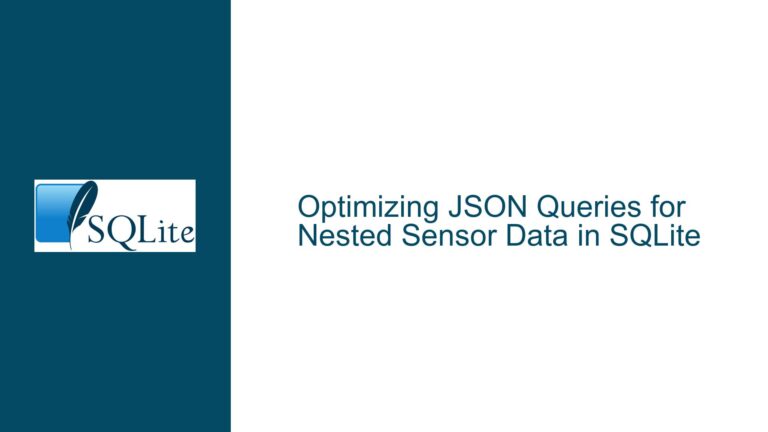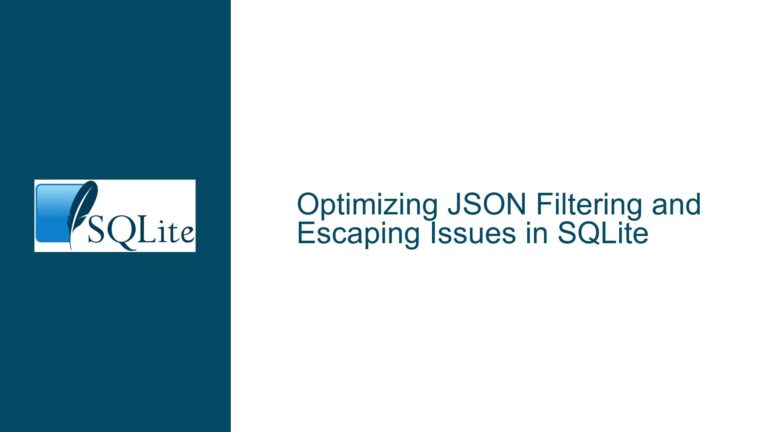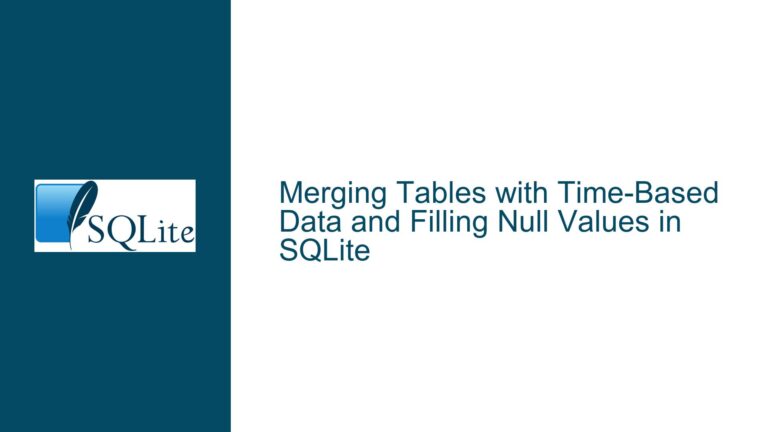Incorrect R-Tree Query Condition in SQLite Documentation
R-Tree Query Condition Error in Documentation
The issue at hand revolves around a subtle but significant error in the SQLite documentation related to the R-Tree module. The R-Tree module is a specialized extension in SQLite designed to handle spatial data efficiently. It allows for the indexing of multi-dimensional data, such as geographical coordinates, and is commonly used in applications that require spatial queries, such as mapping software or location-based services. The documentation provides an example query that demonstrates how to use the R-Tree module to filter spatial data based on a bounding box. However, the example contains an error in the condition used to filter the data along the Y-axis.
The query in question is intended to retrieve objects (objname) from a table (demo_data) that fall within a specified bounding box. The bounding box is defined by minimum and maximum values for the X-axis (minX and maxX) and the Y-axis (minY and maxY). The query joins the demo_data table with the demo_index table, which contains the R-Tree index, and applies a spatial filter using the contained_in function. The error lies in the condition for the maximum Y-axis value (maxY), where the documentation incorrectly uses the >= operator instead of the <= operator. This error would cause the query to return incorrect results, as it would include objects that fall outside the intended bounding box.
The correct condition should ensure that the maxY value of the object is less than or equal to the specified maximum Y-axis value of the bounding box. This ensures that only objects that are fully contained within the bounding box are returned. The error in the documentation could lead to confusion for developers implementing spatial queries using the R-Tree module, potentially resulting in incorrect data retrieval and subsequent issues in applications relying on accurate spatial data filtering.
Misinterpretation of Bounding Box Logic in Spatial Queries
The root cause of this issue lies in a misinterpretation of the logic required to define a bounding box in spatial queries. A bounding box is a rectangular region used to filter spatial data, and it is defined by four boundaries: the minimum and maximum values for the X-axis and the minimum and maximum values for the Y-axis. For an object to be considered within the bounding box, all of its coordinates must fall within these boundaries. This means that the object’s minimum X and Y values must be greater than or equal to the bounding box’s minimum X and Y values, and the object’s maximum X and Y values must be less than or equal to the bounding box’s maximum X and Y values.
In the context of the R-Tree module, the index stores the minimum and maximum values for each dimension of the spatial data. When querying the index, the conditions applied to these values must correctly reflect the boundaries of the bounding box. The error in the documentation arises from an incorrect application of the >= operator to the maxY value, which would incorrectly include objects whose maximum Y value is greater than the bounding box’s maximum Y value. This would result in the query returning objects that extend beyond the intended bounding box, leading to inaccurate spatial filtering.
The correct logic for defining a bounding box in an R-Tree query requires that the maxY value of the object be less than or equal to the bounding box’s maximum Y value. This ensures that the object is fully contained within the bounding box along the Y-axis. The same logic applies to the X-axis, where the maxX value of the object must be less than or equal to the bounding box’s maximum X value. The error in the documentation likely stems from a simple oversight or typo, but it has significant implications for the accuracy of spatial queries.
Correcting R-Tree Query Conditions and Ensuring Accurate Spatial Filtering
To address this issue, developers must ensure that the conditions in their R-Tree queries correctly reflect the boundaries of the bounding box. The correct query should use the <= operator for the maxY condition, as shown below:
SELECT objname FROM demo_data, demo_index
WHERE demo_data.id = demo_index.id
AND contained_in(demo_data.boundary, :boundary)
AND minX >= -81.0 AND maxX <= -79.6
AND minY >= 35.0 AND maxY <= 36.2;
This query ensures that only objects fully contained within the specified bounding box are returned. The minX and minY conditions ensure that the object’s minimum coordinates are within the bounding box, while the maxX and maxY conditions ensure that the object’s maximum coordinates are within the bounding box. This corrects the error in the documentation and ensures accurate spatial filtering.
In addition to correcting the query conditions, developers should also be aware of the broader implications of spatial query accuracy. Inaccurate spatial filtering can lead to incorrect data being returned, which can have serious consequences in applications that rely on precise spatial data, such as geographic information systems (GIS), navigation systems, and location-based services. To mitigate the risk of such errors, developers should thoroughly test their spatial queries and validate the results against known data sets.
Furthermore, developers should consider implementing additional safeguards to ensure the accuracy of their spatial queries. One such safeguard is the use of unit tests to validate the behavior of spatial queries under various conditions. Unit tests can help identify errors in query logic and ensure that the queries return the expected results. Another safeguard is the use of visualizations to verify the results of spatial queries. By plotting the results on a map, developers can visually confirm that the objects returned by the query fall within the intended bounding box.
In conclusion, the error in the SQLite R-Tree documentation highlights the importance of careful attention to detail when working with spatial data. By correcting the query conditions and implementing additional safeguards, developers can ensure the accuracy of their spatial queries and avoid the pitfalls of incorrect spatial filtering. This not only improves the reliability of applications that rely on spatial data but also enhances the overall user experience by providing accurate and relevant results.
